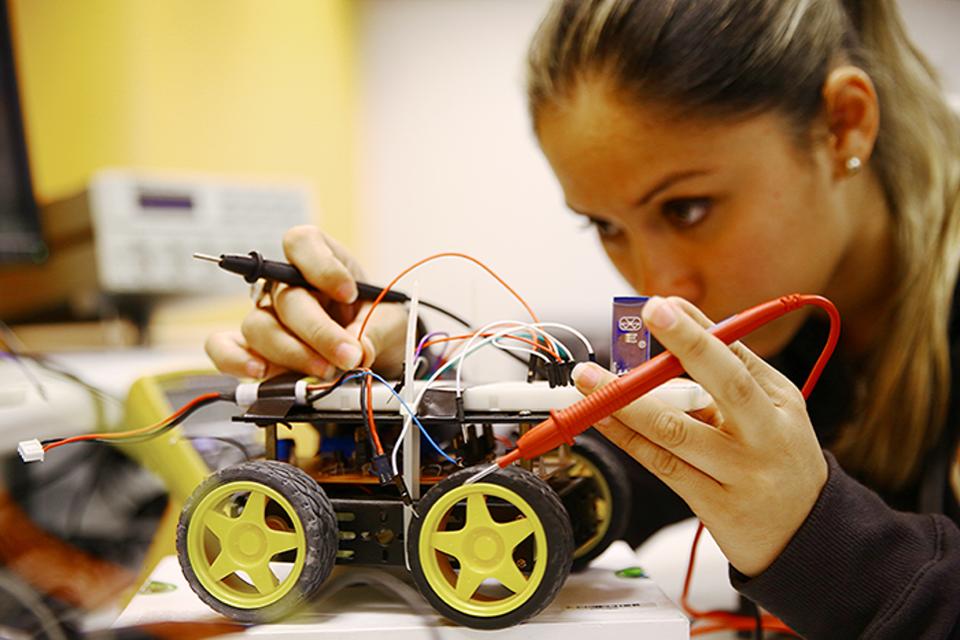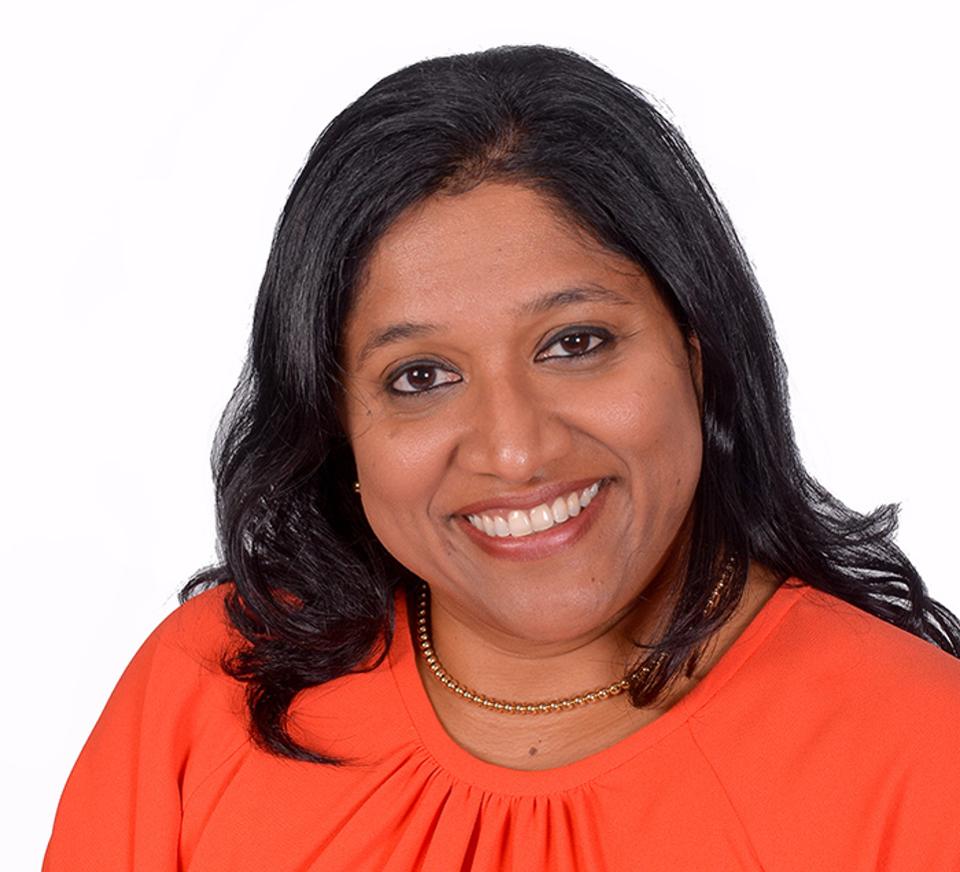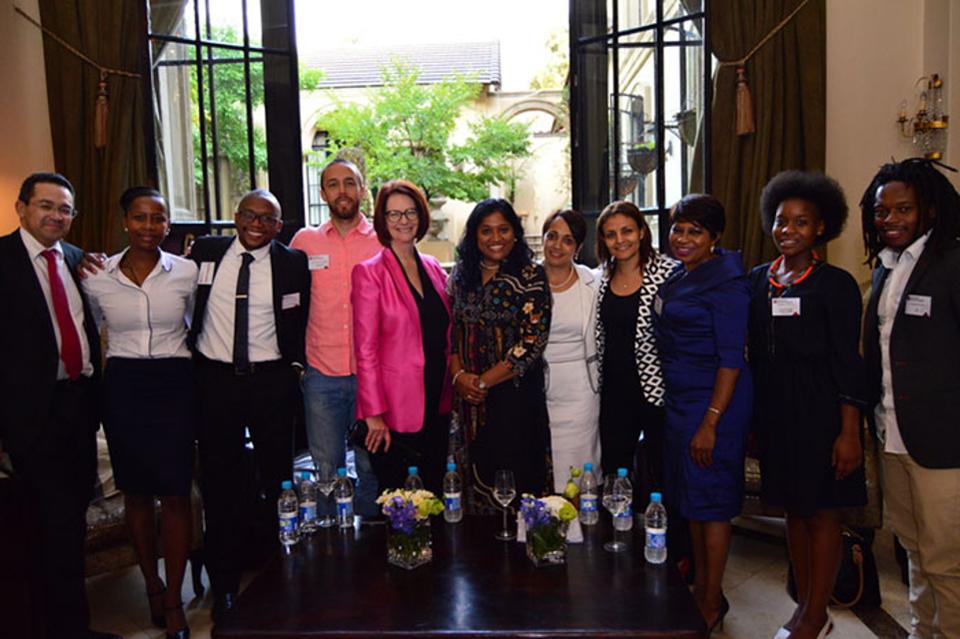
A Laureate University student works on creating an electric-powered model car. Laureate is the largest international for-profit higher-education provider in the world, and last year, it became the first benefit corp to IPO.
Less than one-third of the global student-aged population is enrolled in higher education. I’m not an education expert, but that makes me think about two things:
First, it makes me think we have an equity problem. Too many young people around the world are not being given what they need to succeed; they are not on an educational path that leads to higher education. Higher education is not necessary or desirable for everyone, but no doubt it is necessary and desirable for more than one-third of the young people in the world. Beyond what this means for the limited opportunities for those young people who would like to but are ill-equipped to pursue higher ed, it means that there is limited opportunity for the rest of us to benefit from the insights and innovations that those young people would surely bring to market that would enrich our lives.
Second, it makes me think we have an affordability problem. Too many young people around the world do not have the resources to afford to pursue higher education. This is not only true in the U.S., where we hear lots of conversations about the cost of higher education being increasingly out of reach for many and the crushing weight of student debt that burdens many of those enrolled. Arguably, affordability is even more a limiting factor in many low-income countries in which there aren’t many public higher-education options and the cost of private higher education is out of reach given the lack of public- or private-financed student loans.
This is why I was so excited to speak recently with Esther Benjamin, Chief Benefit Officer and SVP of Global Public Affairs for Laureate International Universities, and former CEO/Africa Operations for Laureate, based in South Africa. Laureate educates 1 million students across 25 countries and is the largest global network of higher education institutions. They are also a for-profit company, which makes them controversial to some, and important for all of us.
 By Laureate International Universities
By Laureate International UniversitiesEsther Benjamin, Chief Benefit Officer and SVP of Global Public Affairs for Laureate International Universities, believes in the potential for the universities to provide affordable education to first-generation students worldwide.
On January 31, 2017, Laureate completed an IPO, raising $490 million. Laureate was the first company to go public that had adopted the benefit corporation legal structure, a relatively new corporate form that aligns the interests of the company with those of society by requiring directors and officers to consider the impact of their decisions on all stakeholders, like students in the case of Laureate. While roughly 5,000 benefit corporations exist, each of them was privately held until Laureate’s IPO. (Natura, a publicly traded company on the Brazilian market, has also adopted a benefit corp-like legal structure.)
Laureate operates in the for-profit higher education sector, a hot-button industry. Are investors allocating their capital to Laureate because there is a huge business opportunity that will drive returns? Or to scale Laureate’s impact by delivering affordable quality higher education to a second million students? Or both? Are they in it for a quick buck, or are they “here for good,” as Laureate likes to say, for the long term? Laureate and its new shareholders addressed these concerns by choosing a corporate structure that requires them to balance profits with the interests of students and the communities in which they live.
However, even though a business adopts a benefit corporation legal structure does not immediately guarantee that the business is meeting a high standard of verified performance in balancing the interests of shareholders and other stakeholders.
In 2014, B Lab began developing new standards specific to the education industry to incorporate into the B Impact Assessment. These standards were created with the goal of providing a set of detailed, standardized evaluation and improvement opportunities for higher education and educational service providers that could contribute to positive social outcomes for students. With the support of two independent, multistakeholder expert working groups, the project produced two industry addenda to the B Impact Assessment — one focused on higher-education institutions (designed for use by both nonprofit and for-profit entities) and one for educational products and services companies.
Based upon an application of these new standards, in December 2015 Laureate met the verified performance requirement to earn the status of a Certified B Corporation.
I sat down with Benjamin to learn more about how and why Laureate took these two steps to walk the talk of being “here for good.”
 By Laureate International Universities
By Laureate International UniversitiesLaureate University students celebrate graduation at Universidad Latina in Costa Rica.
Currently, Laureate’s students are more than 30 percent first-generation college students. If it aspires to increase its number of enrolled students, can it maintain—or even increase—access for first-generation and historically disadvantaged students?
I’ve seen and felt the impact of this access to social mobility first hand. My parents were the first generation to go to university in our family, my life has been different and their lives have been different because of the opportunities that education afforded us. Our education has changed the economic situation for the extended family and the community. This goal is very personal to me.
While running a Laureate university in South Africa, I saw how first-generation university students changed the dynamic on campus. They were extraordinarily grateful and incredibly involved in the life of the campus. They gave back more and they enriched the campus. I can imagine the deeper impact of an even larger Laureate network of students with a higher number of students who are first-generation. This would be a phenomenal contribution.
We track the progress of our students, from admission to enrollment to graduation to employment. We also care about the type of employment that our graduates secure. We want to make sure that all students are supported by our universities to secure jobs with premium salaries, to work in their chosen fields of study, and to be able to build on internships that the institutions helped them to access.
How does Laureate’s mission show up across its close to 70 institutions?
Our students, faculty and staff are doing extraordinary things around the world. I had a chance to visit Laureate Brazil and visited five of our 11 universities there, which educate nearly 275,000 students. Every city that I visited had a Laureate institution, a health clinic, and students working in those health clinics with faculty members. The students were gaining hands-on, practical training, and patients who were members of the community were receiving health care for free or at a low cost.
I saw this in city after city These are the types of contributions to society that affirm the mission of Laureate. There are numerous other examples.
The company and our global network is about social impact. Our focus is on improving access to quality higher education in countries where the public sector is unable to meet the demand. Our decision to adopt the Delaware public benefit corporation legal structure and to become a Certified B Corporation was a natural progression for us, building on the company’s social mission from day one.
What are your social-impact goals for Laureate over the next decade?
The Laureate network currently includes more than 1 million students. Between 2000 and 2013, the number of students in higher education around the world nearly doubled to 200 million, with 90 percent enrolled outside the United States. However, Africa and Asia still have some of the lowest participation rates. In Africa, participation is approximately 10 percent; and participation is between 20 and 30 percent in Asia, depending on the country. The estimates are that there could be up to 300 million students in higher education by 2030. This is a growing market that is becoming increasingly reliant on the private sector because of limited public sector resources. The Laureate network is well-positioned to meet this growing demand in emerging markets.
Laureate also has an opportunity to further improve access to quality higher education for first-generation students and other historically disadvantaged populations. This is something that we learned more about through the B Impact Assessment, a valuable learning as we completed the Higher Education Addendum. I appreciate the way the assessment is structured. As a network of higher education institutions, we focus on access and admission, retention, graduation, and employment. The Addendum focuses on these metrics, but with a particular focus on special-interest populations.
For example, in South Africa, there are populations legally designated as historically disadvantaged populations. These are populations that before democracy in 1994 were systematically disadvantaged. So, Laureate will need to think about the future and how to serve more students, while also focusing on access, retention, graduation and employment for the most disadvantaged populations. The education we provide needs to be about social mobility.
 by Laureate International Universities
by Laureate International UniversitiesJulia Gillard, former Australian Prime Minister, visits a Laureate institution in South Africa, in a gathering with Monash South Africa’s former CEO, Esther Benjamin, key South African executives, staff, and students.
Laureate was the first company using the benefit corporation structure to have an IPO. The benefit corporation legal structure is often the scariest aspect of B Corp certification for companies’ aspirations for the public markets. Do you have any window into what your founder, the board or investment team were thinking about whether it would be an impediment to that final private-equity raise or the IPO, in which combined Laureate raised more than $800 million?
Doug [Becker], our founder, believed in the B Corp movement. There is such resonance for him with being a part of this community of businesses that want to be a force for good. In addition, our general counsel for many years until his retirement, Bob Zentz, believed in the public benefit corporation structure from the beginning, as well as B Corp certification.
Doug and Bob carefully assessed various aspects of the decision, including insurance, taxes, as well as investor, board, and governance considerations. They consulted with many stakeholders, and didn’t come upon any major impediments to what we took on. This was not an immediate process, it was a journey over about 18 to 24 months.
Leading up to the IPO, Doug and our investor relations team raised awareness about the public benefit corporation structure and B Corp certification through many investor conversations. For the most part, the conversations were informational and investors were neutral on the decision. This was an opportunity to raise awareness among major investors in the world. Our investors continued with us to the IPO with our public benefit corporation structure and B Corp commitments.
 By Laureate International Universities
By Laureate International UniversitiesDental students use their in-classroom hours to optimize their learning experience at Universidad Latina in Costa Rica.
Beyond certification, has using the B Impact Assessment been beneficial to Laureate?
We have nearly 70 institutions in our network, and we need tools and systems for being able to compare institutions within regions and across the globe, as well as to set targets for the company. The assessment has given us an important way to more consistently review and to compare metrics across the network. We didn’t have that before covering the specific areas of the assessment – students, workers, community, governance, and the environment. We wouldn’t have focused in on special-interest populations in the same way, without this tool.
The awareness of B Corp within Laureate varies across countries and regions, often because of the size of the B Corp community in the country. In Australia, Brazil and Chile, for example, our institutions are more aware and are more active members of the B Corp community.
We’re going through our B Corp recertification process at the moment, having gone through the first certification in 2015. After we complete our recertification, we plan to focus on developing plans to improve for our 2019 assessment, and to increase awareness of our B Corp status with internal and external stakeholders. We also look forward to developing student B Impact Teams trained to help local companies to become B Corps. We also have an opportunity to integrate B Corp into our business school and other curricula.
What feels most important to you about what’s happening with Laureate right now and what’s happening with the B Corp movement?
We are going through a CEO transition after many years of being led by our founder, Doug Becker. Doug will continue as our chairman. Two of our long-term internal leaders who know the company well have been selected to lead the company from January 2018—Eilif Serck-Hanssen as CEO, and Ricardo Berckemeyer as President and COO. We are excited about their vision and leadership for Laureate’s future.
I’m also excited about what Laureate can contribute in the future. I’m excited about Laureate finding innovative ways of meeting unmet demand for higher education in developing and emerging markets. I am also excited about how Laureate can partner with B Lab to help grow the B Corp community worldwide, by involving Laureate network institutions and other leading companies in the B Corp movement.
[“Source-forbes”]
